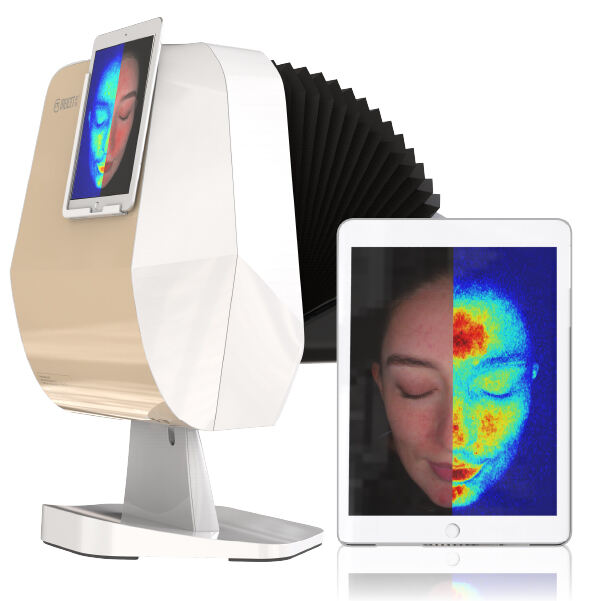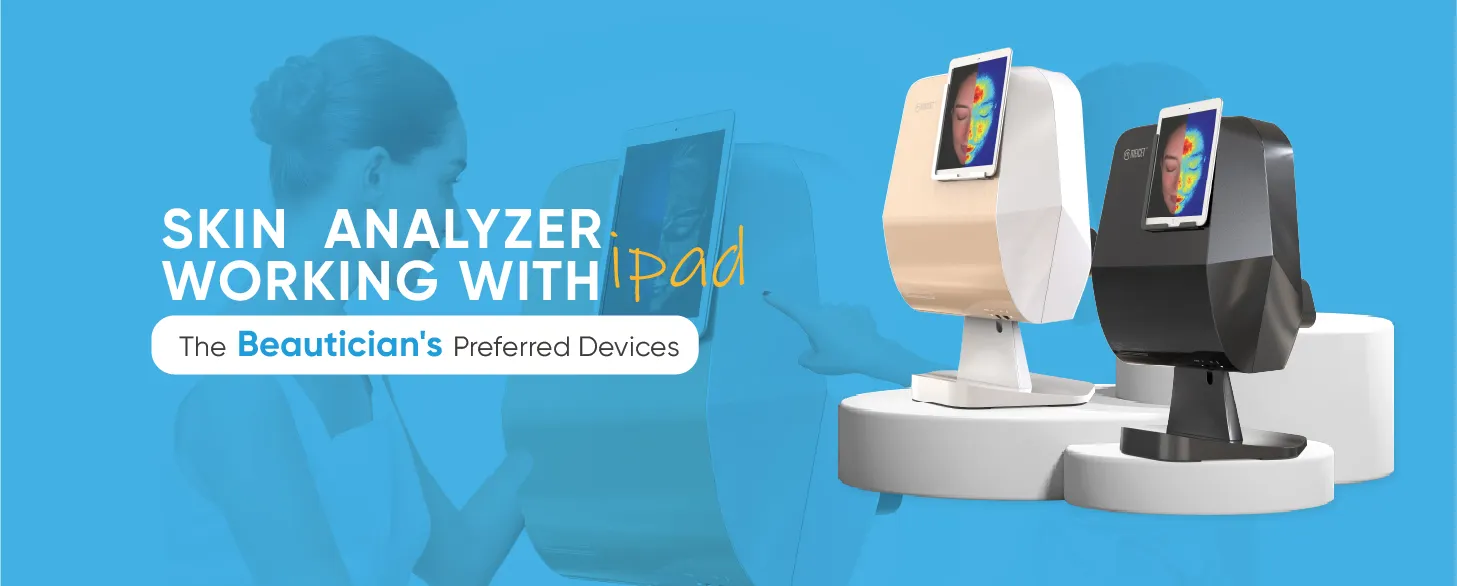
Facial fillers offer transformative results for volume restoration and contour enhancement, but their use in sensitive skin requires careful consideration. Sensitive skin—characterized by barrier fragility, heightened reactivity, and a tendency toward inflammation—carries an increased risk of adverse reactions to fillers, from mild redness and swelling to granulomas or delayed hypersensitivity. For clinicians, the key is to identify pre-procedural markers of sensitivity that predict compatibility, enabling proactive adjustments to minimize risk. MEICET’s MC88 Skin Analyzer addresses this by evaluating barrier function, subclinical inflammation, and vascular reactivity before injection, ensuring filler selection and placement align with the skin’s tolerance.

Pre-Procedural Sensitive Skin Screening
The MC88’s imaging identifies critical pre-procedural indicators that signal increased reaction risk, allowing clinicians to tailor plans accordingly:
- UV imaging assesses barrier integrity by visualizing the stratum corneum’s uniformity. Sensitive skin with a compromised barrier appears as irregular, patchy fluorescence in UV mode—indicating reduced ability to protect against irritants, including filler ingredients. Such patients benefit from pre-treatment with barrier-strengthening products (e.g., ceramides, cholesterol) for a period to improve tolerance.
- Polarized light imaging detects subclinical inflammation, which may not be visible to the naked eye but can exacerbate filler reactions. Persistent redness in polarized mode—even without clinical signs—suggests underlying immune activation, increasing the risk of post-injection swelling or granulomas. These patients may require pre-treatment with anti-inflammatory topicals (e.g., pimecrolimus) to calm the skin.
- RGB imaging maps existing texture irregularities, such as eczema patches, psoriasis plaques, or active acne, which create areas of heightened reactivity. Fillers injected near these zones are more likely to trigger inflammation, guiding clinicians to avoid sensitive areas or delay treatment until the skin stabilizes.
A patient with a history of atopic dermatitis seeking cheek fillers undergoes MC88 screening:
- UV imaging shows patchy fluorescence (barrier weakness).
- Polarized light reveals subtle redness (subclinical inflammation).
- RGB shows no active eczema but mild scaling on the cheeks.
The clinician delays fillers, prescribes a ceramide moisturizer and anti-inflammatory serum for a period, and repeats MC88 scans: UV shows improved uniformity, polarized light redness resolved, RGB scaling gone—confirming the skin is ready for injection with a hyaluronic acid filler (chosen for its low reactivity profile).
Selecting Filler Type and Placement
Not all fillers are equally compatible with sensitive skin, and the MC88’s data guides product selection and placement:
- Filler type: Hyaluronic acid (HA) fillers are generally better tolerated than bovine collagen or synthetic options in sensitive skin, as HA is biocompatible and reversible (via hyaluronidase). Within HA fillers, those with lower cross-linking density (softer consistency) may cause less trauma during injection, reducing inflammation risk—particularly for patients with polarized light evidence of pre-existing vascular reactivity.
- Placement depth: The MC88’s RGB and polarized light imaging help identify optimal planes for injection. Sensitive skin with barrier issues benefits from deeper placement (subcutaneous or supraperiosteal) to avoid the fragile epidermis and dermis, reducing irritation risk. For example, cheek fillers placed supraperiosteally in a patient with UV barrier irregularities are less likely to trigger surface inflammation than those placed superficially.
- Injection technique: Patients with polarized light evidence of vascular dilation may benefit from slower injection speeds and smaller aliquots to minimize trauma, reducing the risk of triggering a vascular response.
A patient with rosacea (ETR subtype) seeking lip fillers has MC88 scans showing polarized light vascular dilation in the perioral area. The clinician selects a soft HA filler, injects deeply into the lip submucosa (avoiding superficial layers), and uses a slow, serial puncture technique—minimizing vascular irritation and reducing post-injection redness.
Post-Procedural Reaction Monitoring
Even with careful screening, sensitive skin may react to fillers, making early detection critical. The MC88 tracks subtle signs of adverse events:
- Polarized light imaging detects localized redness beyond normal post-injection swelling, which peaks early and resolves over time. Persistent or worsening redness later suggests a hypersensitivity reaction, prompting antihistamines or, in severe cases, hyaluronidase.
- RGB imaging identifies lumps or nodules, which may indicate granulomas (firm, well-defined) or uneven filler distribution (soft, diffuse). Early granulomas appear as small, raised areas in RGB mode later, enabling steroid injection to prevent growth.
- UV imaging monitors barrier disruption post-injection, which should resolve in due time. Persistent UV irregularity later signals ongoing irritation, guiding the addition of soothing moisturizers or occlusive balms.
A patient with sensitive skin and post-lip filler swelling undergoes MC88 scans later:
- Polarized light shows mild residual redness (normal).
- RGB reveals no lumps.
- UV shows improving barrier uniformity.
Later, scans show polarized light redness resolved, RGB smooth texture, UV uniform—confirming no adverse reaction and successful integration.
The MC88 Skin Analyzer transforms filler use in sensitive skin from a high-risk endeavor to a predictable, safe procedure. By enabling pre-procedural screening, guiding product selection, and monitoring for early reactions, it ensures clinicians can deliver the aesthetic benefits of fillers while respecting the skin’s unique needs—enhancing patient satisfaction and safety.
 EN
EN
 AR
AR
 BG
BG
 HR
HR
 CS
CS
 DA
DA
 NL
NL
 FI
FI
 FR
FR
 DE
DE
 EL
EL
 HI
HI
 IT
IT
 JA
JA
 KO
KO
 NO
NO
 PL
PL
 PT
PT
 RO
RO
 RU
RU
 ES
ES
 SV
SV
 TL
TL
 IW
IW
 ID
ID
 SR
SR
 SK
SK
 SL
SL
 UK
UK
 VI
VI
 SQ
SQ
 HU
HU
 TH
TH
 TR
TR
 FA
FA
 AF
AF
 MS
MS
 UR
UR
 BN
BN
 LA
LA

